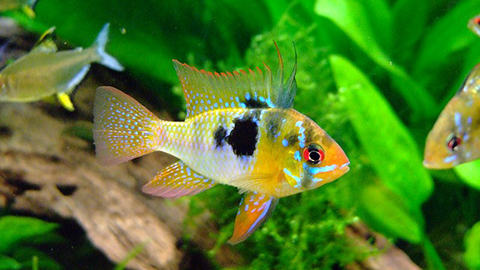Breeding Cichlids Recognise Intruders from Colour Cues
Breeding Cichlids defending their offspring attack fish that present a greater threat to the their territory more aggressively.

Cichlids are also popular aquarium fish.
Cichlids, which are also well-known by many aquarium owners, are masters in recognising threats. According to the study conducted by the University of Turku and Australian Monash University, cichlids, which defend their territory and offspring vehemently, can target their aggression strategically solely on the basis of the intruder's colouration – even when the unwanted quests are a member of another species.
The researchers consider the results to be remarkable, as they prove that animals can pay close attention to the colour signals of other species and fine-tune their behaviour accordingly.
During the breeding season, many different cichlid species establish their breeding territories side by side at the bottom of a lake. The greatest threat to the cichlids' territories are fish that are not breeding themselves.
– During the breeding season, the parents are busy defending their territories and offspring, so they live mainly on stored body-fat. On the other hand, fish that are not breeding are actively looking for nutrition, such as juvenile fish. In addition, cichlids can try to occupy the territory of other fish in order to claim it as their own breeding ground, says Topi Lehtonen, who led the research at the University of Turku.
Cichlids Attack Fish with Non-breeding Colouration
The researchers assumed that the parents defending their territory would also benefit from recognising the reproduction stage of other species from, for example, their breeding colouration. In order to confirm their hypothesis, they did a field study at the Xiloá crater lake in Nicaragua, which involved scuba diving.
In the study, the researchers used fish models made of plastic discs with glued pictures of other cichlid species and presented them to the fish defending their territories. Each fish model had a thin tine line with a sinker so that the model would float near the bottom of the lake like actual fish.
– The parents attacked the models as if they were real intrudes on their territory, says Associate Professor Bob Wong from the Monash University in Melbourne.
The researchers discovered that the behaviour of the cichlid parents was influenced by the details in the models' colouration. The fish were much more aggressive towards models with non-breeding colouration than those with breeding colouration.
>> The research results were published in The American Naturalist journal
Photo:Kullerkeks
Text: Jenni Valta
Translation: Mari Ratia